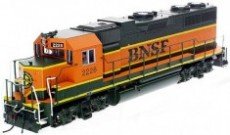Everything on model trains, model railroads, model railways, locomotives, model train layouts, scenery, wiring, DCC and more. Enjoy the world's best hobby... model railroading!
Lift Out or Up Section For Pass Through
Steve asks for guidance from experienced model railroaders and asks:
“I have been building the benchwork for my HO model railroad for several years. I originally planned to simply do a duck-under to get to the inside walkway. The table is approx. 44 inches (window height) high. I have a disability that is progressing faster than I ever thought it would and a duck-under is no longer a viable option. Also a rolling stool isn’t very good either. I need to be able to lift or swing up on hinges a section wide enough for me to squeeze through that will cross a portion of table just over 5o inches wide. I need about a 12 – 14 inch passage. There will be multiple tracks. I can handle the electrical, but how do I maintain good track alignment? It will be used very frequently and I don’t wish to disturb the track integrity any more than I have to. Can someone give me some ideas please?”
Add your comments or suggestions to Steve’s post.
Old Engines With DCC
Paul asks readers:
“I have three old OO Hornby models that have been adapted for DCC running. Unfortunately they do not run smoothly but seems to start and stop at will. It is not only over points. do you have any suggestions as to how I can make then run smoothly? Many thanks.”
Add your comments to this post.
Why Won’t The Solder “take”?
Soldering is something most in the hobby will need to master. If the solder will not take it is an indication the surfaces are not clean enough, or soldering iron is still not hot enough. The solution is to ensure BOTH surfaces are clean and shiny. Also make sure you have applied a thin coat of flux. The soldering iron needs to be hot enough for the flux to sizzle and boil just prior to applying the solder.
Add your comment or suggestion.
Model Train Poll Results
The results of the last poll are in. The question was “Have you ever used foam core sheets when constructing scenery or structures?”
>> YES (51%, 157 Votes)
>> NO (35%, 108 Votes)
>> I’ve never heard of it before (14%, 41 Votes)
Total Voters: 306
Adding A Crossing Shanty To Your Layout
Since the early days of the steam locomotive, the convergence of railroad crossings and roads have always posed potential dangers to human life. These days, thanks to technology, many railroad crossings have sophisticated barrier arrangements to protect, vehicles, trains and people from colliding. That is not to say they are perfect, as some people still seem to ignore the danger not understanding that locomotives can’t pull up and stop as quickly as road vehicles .
However, prior to the invention of modern automated crossing barrier protections, busier railroad crossings were typically managed by a flagman whose job it was to stop the road traffic if and when a train approached. This was an important job, but often the waiting time between trains was lengthy. The flagman therefore required a place to rest up.
The little shed/hut for this was called a crossing shanty, which was usually positioned near to the tracks so that the flagman could be ready to jump into action whenever a train approached. The crossing shanty was a place where the flagman could rest, and keep dry and warm. Compared to some other railroad jobs the task was not considered overly strenuous so was sometimes assigned to employees with injuries or those requiring light duties.
This short film clip show construction of a model railroad crossing shanty. The plan is available here http://www.modelbuildings.org/crossing-shanty-B438.html
Which Adhesives For Model Train Layouts?
John has a question for readers about glues:
“Elmer’s white glue is great for laying down track with ballast and roadbed attached, but takes awhile to set, so for figures it’s almost useless. They always fall over. Does anyone know of a modeling glue that sets up fast and is good for figures?
Add your suggestions/comments to this post.
Laying Train Track On Cork
George has a question for you:
“Trying to lay cork using center of track is frustrating because its difficult to mark the actual line with the track in place on the plywood. What is needed is a tool to mark the center line. Doing it by eye creates a very unprecice line. I thought of using a two wheel truck and making the dot through the mounting hole on the truck. In practice it didn’t work too well. Using a pencil through the hole wasn’t much better. What is needed is a marking pencil firmly mounted to the truck hole. Is there any such tool available?”
Add your comments.
How To Make A Wall Hanging For Your Train Room
Most of us focus on our layouts, and forget about the total room setting. It usually pays to have some comfortable seating even if its in an adjacent room to relax and talk trains with friends.
Here’s a simple idea for a wall hanging using low relief buildings. The wall hanging is easy to make and would be a interesting talking point with others in the hobby.
If you decide to make one of these wall hangings, feel free to send in a photo so we can publish it on the blog. Use this link to get in touch http://www.model-railroad-resources.com/submit-questions.html to provide some details about where you will be hanging it etc.
Turnouts and Switches
Russ seeks guidance from others in the hobby and asks:
“I am using a 060 Tank locomotive to test my atlas turnouts. When working slowly it stops – when working faster it can derail.
As it goes through the points the loco seems to rise a little. What am I doing wrong?”
Add your comment to help Russ.
Low Relief Buildings Made Into Artwork For Model Railroad
Here’s an interesting idea.
Mike sent in these photos to share. He downloaded some low relief building plans for his model railroad layout and decided to also make an extra copy and glue them onto an artist canvas panel. The ready-made artist canvas panel cost him $12.95.
He painted it in trendy colors and glued the low relief buildings onto the painted panel. He then hung the finished artwork (like a 3D painting) on the wall above his layout.
Malcolm got the low relief buildings from http://www.modelbuildings.org
LED Headlights on Model Trains
Marc asks readers:
 Hi, Just wondering if anyone else uses LED’s to upgrade loco headlights? I use super bright white for my Diesels and they look amazing. They’re so bright that they actually light up scenery etc like the real thing when running in the dark. I love them, and think they’re heaps better than standard lights, and far more realistic.
Hi, Just wondering if anyone else uses LED’s to upgrade loco headlights? I use super bright white for my Diesels and they look amazing. They’re so bright that they actually light up scenery etc like the real thing when running in the dark. I love them, and think they’re heaps better than standard lights, and far more realistic.
Add your comment.
Soldering Nickel Silver Rail to Printed Circuit Board
Jason sent in these soldering tips to share:
When soldering nickel silver rails to PC board ties both surfaces need to be thoroughly clean and oil free. You can used an acid based flux for cleaning the surfaces, which will help produce a good looking, reliable solder joint.
When doing this you are not building an electronic circuit, so using an acid based flux for turnout construction is okay. Unlike with electronic circuitry, the soldering joints will mainly provide mechanical strength, so that the completed track can easily be scrubbed clean using a wire brush to remove the acid residue.
The word “acid” sounds frightening, but the acid in acid based flux is really quite mild, and as long as you use a wire brush to thoroughly scrub clean the track, you shouldn’t have any problems.
Add your comment
Tips For Constructing LOW RELIEF Buildings
Low relief buildings are simply buildings that have only 1, 2 , or 3 sides. When placed directly in front of a background they give the impression of being complete 3D structures. This can save a lot of space and give the impression the model railroad stretches much further into the distant landscape than is the case. Construction low relief buildings is surprisingly easy when you know how. These short videos will show you the simple step by step process.
Constructing Low Relief Model Railroad Buildings – Part 1
Having low relief buildings positioned against a wall or backdrop can really give a model railroad a sense of perspective and trick the mind into believing the model railroad scene is bigger than it actually is.
You can download the PDF plans for this model railroad street scene at http://www.modelbuildings.org/low-relief-buildings.html They can easily be scaled to the size you want, but remember you might want to make them a bit smaller than the scale you are operating as the buildings will probably be in the distance.
Constructing Low Relief Model Railroad Buildings – Part 2
POLL RESULTS : What do you most like to model?
329 model railroaders responded to our recent poll which asked – What do you most like to model?
Here’s what they said:
>> Scenery (32%, 105 Votes)
>> Buildings (30%, 98 Votes)
>> Locomotives (24%, 80 Votes)
>> Rolling stock (9%, 31 Votes)
>> Bridges (5%, 15 Votes)
Add your comment to this post.
Bachmann Spare Parts
Gil asks others in the hobby for advice:
“Where can I purchase spare parts for N gauge Bachmann Plymoth Shunter – Bachmann only want to sell me a complete chassis – $40.00 – all I want is the Drive Wheels that merge with the worm gear- they are kidding – no spare parts now means I have a perfectly good engine that can’t now be used.”
Comment below.
Shipping Containers Add Realism To Model Railroads
A quick look around any real railroad or port will show a range of shipping containers stacked on trains, in yards, on ships, and on wharves. They will probably vary greatly in appearance as some will be reasonably new and others will be old and rusty perhaps with scrapes, dents, and even graffiti plastered all over them.
You might even spot some old shipping containers used to store goods on an industrial site or on a farm. This is because old shipping containers are relatively inexpensive to buy, they can be made very secure, and they are very easily modified (inside). That is why is can be an excellent idea to include scaled down shipping containers on a model railroad layout. They will add character and realism to any scene.
This short video shows the easy way to make model shipping containers that look extremely real. After downloading the PDF file you can print out any number you require.
Analog and DCC Wires, Engines and Transformers
Richard has a question for readers:
“My layout is not wired yet. However I have all analog engines, I would also like to buy DCC engines. How can I run both? I have analog transformers now , should I also buy a DCC transformer? Can I wire my set up to be able to run both type engines? Thanks for any help.”
Add your suggestions.

















